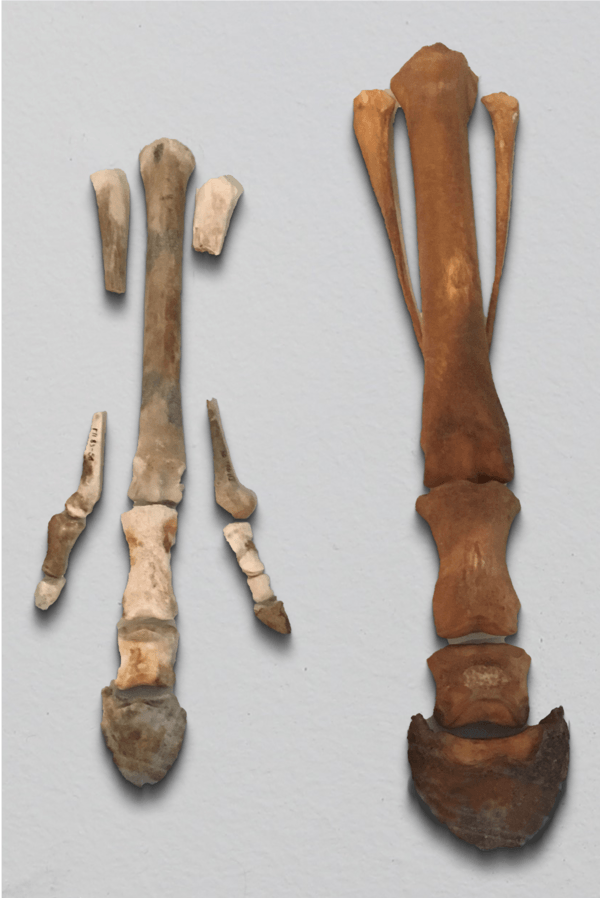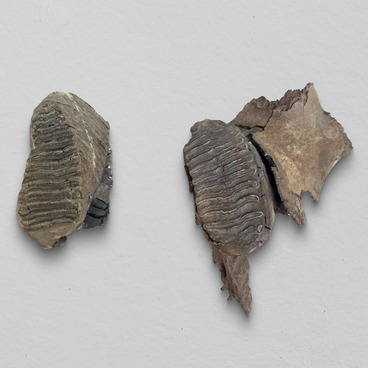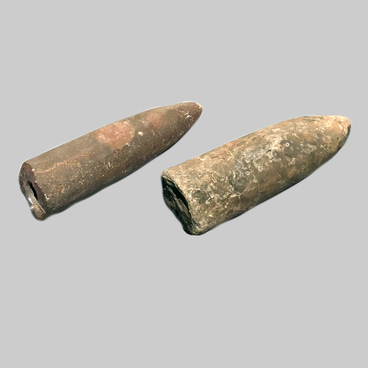Hipparion - a genus of ancient horses - died out more than 200,000 years ago. Its representatives appeared in North America several million years ago, and then settled in Asia and Europe. The Hipparion genus included more than 50 species.
The first hipparion found by scientists were miniature compared to modern horses: the height at the withers was about 1.5 meters. Their size was why the genus was dubbed like that: ‘hipparion’ means ‘little horse’ translated from Greek.
The legs of these prehistoric horses were short, with three toes - a well-developed middle toe and small ones on the sides. When running on a hard surface, those toes on the hipparion off to the side did not touch the ground. As soon as the animal moved to sand or loose snow, those lateral digits became spread apart, and provided a large area of support that allowed it to move with the same ease as on solid ground.
Judging by the structure of its toes, and the features involved in how it bent its limbs, and how its teeth grew, scientists have established that the hipparion lived on wet grasslands rich in soft meadows. The horses roamed in large herds, and were not too lively when running. The change in climate had a tremendous impact on them, and the hipparion went extinct, and without leaving any descendants. In their place came the genus pliohippus, which is a possible ancestor, or at least a close relative, of modern horses.
The domestic horse is the only subspecies of wild horse that has survived to this day, besides Przewalski’s horse. Large domestic horse species can reach 2.2 meters at the withers. Its ancestor, the tarpan, is a species of wild horses that is extinct now. The last specimens of tarpan survived up until the beginning of the 20th century.
The issue of who domesticated the horse, and where and when it was domesticated, remains an open-ended one. Most scientists are inclined to believe that this happened 5,500 years ago. The first horse breeders seem to be representatives from the Botai culture, whose settlements were discovered by archaeologists in the steppes of Kazakhstan. But some researchers cite the fact that the bones of those ancient Botai horses contain genetic material close to that in Przewalski’s horse, and in terms of DNA they do not match domestic horses by more than 3%.
Domestic horses have only one toe, which is fully developed and covered by a hoof. However, sometimes individuals in this species are born with atavisms, meaning features like those their ancestors had. For example, there are cases of extra toes, which are undeveloped and set back in relation to the hoof. Then the leg of the domestic horse becomes similar to the leg of the hipparion.
The first hipparion found by scientists were miniature compared to modern horses: the height at the withers was about 1.5 meters. Their size was why the genus was dubbed like that: ‘hipparion’ means ‘little horse’ translated from Greek.
The legs of these prehistoric horses were short, with three toes - a well-developed middle toe and small ones on the sides. When running on a hard surface, those toes on the hipparion off to the side did not touch the ground. As soon as the animal moved to sand or loose snow, those lateral digits became spread apart, and provided a large area of support that allowed it to move with the same ease as on solid ground.
Judging by the structure of its toes, and the features involved in how it bent its limbs, and how its teeth grew, scientists have established that the hipparion lived on wet grasslands rich in soft meadows. The horses roamed in large herds, and were not too lively when running. The change in climate had a tremendous impact on them, and the hipparion went extinct, and without leaving any descendants. In their place came the genus pliohippus, which is a possible ancestor, or at least a close relative, of modern horses.
The domestic horse is the only subspecies of wild horse that has survived to this day, besides Przewalski’s horse. Large domestic horse species can reach 2.2 meters at the withers. Its ancestor, the tarpan, is a species of wild horses that is extinct now. The last specimens of tarpan survived up until the beginning of the 20th century.
The issue of who domesticated the horse, and where and when it was domesticated, remains an open-ended one. Most scientists are inclined to believe that this happened 5,500 years ago. The first horse breeders seem to be representatives from the Botai culture, whose settlements were discovered by archaeologists in the steppes of Kazakhstan. But some researchers cite the fact that the bones of those ancient Botai horses contain genetic material close to that in Przewalski’s horse, and in terms of DNA they do not match domestic horses by more than 3%.
Domestic horses have only one toe, which is fully developed and covered by a hoof. However, sometimes individuals in this species are born with atavisms, meaning features like those their ancestors had. For example, there are cases of extra toes, which are undeveloped and set back in relation to the hoof. Then the leg of the domestic horse becomes similar to the leg of the hipparion.



